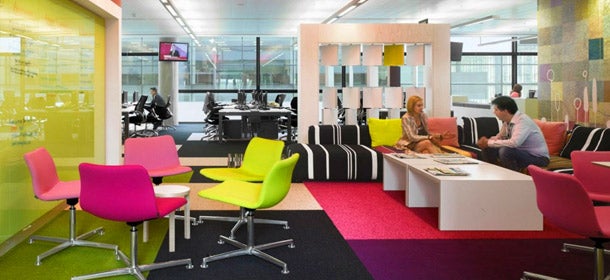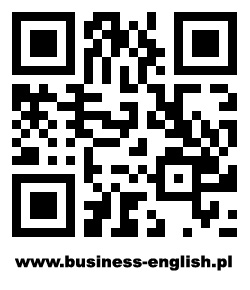Workshifting – Are You Ready For Change?
 Working for just an hour a week, from any device you choose, for a company that has no headquarters of any kind – sounds crazy, but also good, right? It should. The way things are going, that’s the kind of workplace you’ll start seeing a lot of over the next ten years. The change and the new type of working culture are now referred to as „workshifting”. But is workshifting all it’s cracked up to be? And what will become of all the people who already put in countless hours of hard graft at their offices? Read further to see just how ready you are to enter the brave new world of a workshifted workplace.
Working for just an hour a week, from any device you choose, for a company that has no headquarters of any kind – sounds crazy, but also good, right? It should. The way things are going, that’s the kind of workplace you’ll start seeing a lot of over the next ten years. The change and the new type of working culture are now referred to as „workshifting”. But is workshifting all it’s cracked up to be? And what will become of all the people who already put in countless hours of hard graft at their offices? Read further to see just how ready you are to enter the brave new world of a workshifted workplace.

There’s a lot of things that are wrong with the „cubicle-based” corporate culture, but not many would say that being used to hard, long hours at the office is among them. After all, corporate employee’s time is valuable, so working long hours in the office not only earns a hefty sum of money, but at the end of the day gives them a sense of a job well done. And working overtime? Well, it’s only logical: if working for X hours a week lets you finish Y amount of tasks, then working more hours per week will increase the amount of completed tasks accordingly, right?
Well, apparently it’s not as simple as that. According to Business Insider, working long hours is unhealthy and costs companies a ton of money. It also limits the time in which you’re the most productive, perpetuating the same behaviour over and over again; since you’re too tired to properly concentrate, you have to put in more hours to get to your goals, including working over the weekend. And interestingly enough, despite being overworked at the office, more and more people are taking work home – about 33%, according to SmallBizTrends.
The old 20/80 rule (where 80% of results requires 20% of our energy) should already be a good motivating factor to stop toiling away at the office overtime or taking your office work home for the weekend. In fact, the surprising amount of people who like working Saturdays or Sundays at home may simply be indicative of the fact that people do naturally work better on their time, in their own, controlled space. So what can be done to make „regular” working hours more productive?

Flexible working time
The 20/80 sentiment is what guru Tim Ferriss – the author of the best-selling The 4-hour Workweek – made into a rather novel business philosophy of working smarter AND harder, but not MORE. If you look back at Henry Ford’s introduction of the 5-day working week, you’ll see that the reason he did that was to increase productivity. However, we’ve come a long way since Henry Ford. One must ask oneself; if 5-day working week was possible when 6-day week was the norm, why stop there now, a hundred years on?
That question is a valid one. Since the 20/80 rule applies to any working week, it makes little sense to increase the amount of working hours, thus further diluting the meaningful 20% with meaningless tasks. Hence Ferriss’s 4-hour workweek paradigm, where the idea is not only to concentrate one’s working life to make it more productive, but to actually shift the work-life balance firmly into the „life” part of the spectrum.
Sounds fantastic, but still rather unreal. How would it be even possible to move away from an 8-hour-a-day (with overtime) to such a small, neat package? The change to a new environment, way of thinking about work and time spent working has to be gradual, not least because corporate culture does have its merits and worked fine for the last century. But workshifting is already happening all over the world, and it comes in several separate – but deeply interconnected – ways, and it’s about more than just flexible working week.

Outsourcing and freelancing
First sign of the new work culture was a move away from keeping employees close at hand. Outsourcing is an older, well-known trend, often criticized and maligned by people that feel their jobs are being taken. But that considered, it should be noted that the outsourcing boom has only been made possible because cost of work ballooned in the first place, and that happened largely owing to inefficient time management.
At its heart, though, outsourcing is naught but a more organized and ordered form of freelancing, where specialists are simply recruited from countries where their time costs less.
A top-10 working trends in 2014 list by Forbes ranks freelancing as the 2nd most important workplace trend this year. The author of the list, Dan Schawbel also claims that 17 million Americans (one third of working-age citizens) are hired specialists or contractors, only brought in for just-in-time contracts. Schwabel says that in just six years there will be more of them than their full-time counterparts. The reason for that is a dramatic need to cut costs in the wake of the economic crisis.

According to a very interesting study by Citrix, new trends in outsourcing and freelancing have drastically reduced operating expense of the companies. More than a half of the biggest companies in the world attribute dropping wage-related costs to using just-in-time models. Almost half of the companies claim this is what attracts talented people. And on the other side of the barricade, more than 60% of hired contractors claim to be able to work more efficiently, while 55% state that this is what restored their work-life balance. And none of that would even be possible just ten or twenty years ago — all because of the new way of thinking about the office itself.
The old new office
It may seem strange, but the biggest revolution in the workplace may not have been the Internet or the computer, or even a cell phone. Considering the emerging styles of work over the last decade, it may probably have been the productive mobility offered by the smartphone, and later the tablet. Indeed, the two devices are hallmarks of workshifting and make up the new office.

And so, the new office is no longer an office per se. It’s wherever you are and whenever you want it to be. Right now, it’s already a very trite idea, a wonderfully overused cliché peddled by every cell phone company, every mobile Internet provider, most firms producing smartphones, tablets, netbooks, ultrabooks and other „screen” devices that can be used on the go. For years they have been hyping up the fact that you can work whenever you like… They just forgot to put into a larger, more meaningful context. Instead of supplementing your already hectic office life, the new office takes precedence over any other place you work. It’s not „taking your office with you”, it’s removing „the office” part altogether. The Citrix report confirms that; they claim that by 2020, office space at the companies is going to decrease by 17%, owing to the BYOD (bring your own device) and hot-desking being the norm, both intrinsic elements of the workshifting phenomenon.
BYOD and hot-desking
Hot-desking simply means that some desks at the office can be occupied by any employee that is currently present, which means that at least a portion of the staff is hired on a flexible, rather than fixed, time allotment.

Unlike hot-desking, BYOD is about using your own tools to do your job. The idea is that you bring your own computing platform to work, set up exactly the way you like it and controlled by you and you alone. And the number of devices you may bring with you – or use to connect to your company and perform your duties – grows as well. That same study by Citrix shows that by 2020 every employee will be connecting their firm from at least six different devices, and because their timetable will be made equally flexible, only 2/3 of current office space will be required in physical form. The Citrix formula for future office work per person is thus 1 person * 6 devices @ 2/3 of a desk.

Working from home
Does it mean that we’re all going to work from home in the future? Not necessarily. The idea of office being no longer a physical space owned and organized by the company has many more far-reaching consequences, not all of them positive. Workers from home still require a lot of supervision, productivity analysis and goal-setting, and that creates some additional problems.
One of them is the need to keep closer tabs on what the employee does with their tasks and getting things done in a timely fashion. It’s a very easy thing to do if you work on creative tasks, where your book, game or piece of music becomes the tangible product of your efforts. Its delivery to the people that ordered it is a goal in and of itself. But what of the more „grindy” jobs that are taken away from the office? What about working from home as a regular member of a larger team devoted to a single bigger goal (e.g. creating a large new computer program)? That requires a whole infrastructure like VPN solutions or remote project management systems. And many small and medium-sized enterprises lack such infrastructure due to financial restrictions. The new office and new technology makes it possible for smaller teams to do what only big companies were able to do before, but the obstacles remain, and it’s up to the companies themselves to find a working solution to coordinating and monitoring their remote employees. But that’s not the only drawback of working in a classical hierarchy within a new technological framework.

Classic hierarchy, disruptive colleagues and co-working
In fact, a series of studies by an architecture firm Gensler point to the way the classical office was designed as the largest disruptive factor within an office environment. The so-called „cube-farms” popular in the day did get one thing right: even when working in large teams, people need individual spaces to focus, and focusing at work is more important (or so it seems) than collaboration and interaction.
But even outside of typical offices, people rarely function well within a traditional hierarchy, even if its purely virtual. Instead of creative collaboration, traditional hierarchy makes people compete and that in turn creates many social dynamics that hamper productivity. There’s jealousy, manipulation, animosity, personal vendettas and more, all the result of working on the same projects or competing to get the same things done by many people at once.
However, working in isolation, like in a separate office spaces or from home, has its distinct disadvantages as well. The Dokker blog, ran by people from Dokker, an online career-management service, lists several negative effects of working alone, mostly relating to feeling social anxiety, lack of immediate oversight and poor knowledge transfer between the company and its employee.

Enter co-working, another workshifting phenomenon that is still largely in its infancy. The history and definition of the concept can be found at a handy Deskmag presentation, where several global hotbeds of co-working are identified.
Co-working basically puts people that work on completely (or slightly) different things together in the same environment. This removes any hierarchical problems, such as competitiveness, jealousy or animosity, since people that work nearby aren’t trying to climb the same career ladder rungs as you do. Co-working promotes a safe, easy-going and inspiring office that fosters creativity and free sharing of ideas but removes the pesky interoffice rivalries or sucking up to the manager. Still, that doesn’t in the slightest address the other problem of it being hard to concentrate in a chaotic office space. That’s an issue the existing solution to which – working from home – makes people rather lonely and isolated, even if they’re more focused and productive… So far, none of the proposed ways around the issue of concentrating at work are feasible enough to make it a viable long-term solution.
When you look at the figures and trends it’s pretty easy to see that the traditional office work practice is on its way out, be it open-plan or cubicle farm office environment. It’s also unreasonable to expect modern, multi-time-zone workers to start working when all the others are working and rest when all the others are resting. Workshifting is thus a large and all-encompassing trend that promotes mobile work styles and less office-based workers, but also a trend that perhaps still requires some time to mature and become a complete solution…
So how many devices will you be bringing to your next co-working session?
VOCABULARY
device – urządzenie
headquarters – siedziba główna (firmy)
to refer to sth as – określać coś jakimś mianem
is sth all it’s cracked up to be? – czy coś oby na pewno jest na tyle dobre (jak się mówi, zapowiada itp.)
countless – niezliczony
hard graft – harówa, ciężki mozół (pot., UK)
the brave new world – wspaniały nowy świat
cubicle – boks (np. w biurze)
employee – pracownik
valuable – wartościowy
hefty – pokaźny
sense – poczucie, odczucie
overtime – nadgodziny
task – zadanie
per week – na tydzień, tygodniowo
accordingly – odpowiednio
according to – zgodnie z, według
to limit – ograniczać
productive – wydajny, produktywny
to perpetuate sth – utrwalać, powielać coś
behaviour – zachowanie (UK)
properly – odpowiednio
goal – cel
despite – pomimo
overworked – przepracowany
to toil away – harować, ciężko pracować
to be indicative of sth – wskazywać na coś
flexible – elastyczny
sentiment – pogląd, przekonanie
best-selling – bestselerowy, najpopularniejszy
novel – nowatorski
introduction – wprowadzenie
to come a long way since sth – zmienić się bardzo od kiedyś/czasu czegoś
X years on – po X latach
valid – sensowny, zasadny
to apply to sth – stosować się do, mieć zastosowanie wobec czegoś/w czymś
to dilute – rozcieńczać, osłabić coś
meaningful – istotny, mający znaczenie
paradigm – paradygmat, schemat myślowy
to shift the balance – przesunąć środek ciężkości, zmienić równowagę
firmly – tu: mocno, wyraźnie
unreal – nierzeczywisty
neat – zgrabny
gradual – stopniowy
not least because… – z całkiem istotnego powodu…
merit – zaleta
century – wiek
several – kilka
interconnected – wzajemnie powiązany
freelancing – praca jako wolny strzelec
to keep sb close at/to hand – mieć kogoś na podorędziu
maligned – szkalowany, posądzany (o coś)
to consider – rozważyć, ocenić
to balloon – zwiększyć się, gwałtownie wzrosnąć
owing to – z powodu, przez
inefficient – nieefektywny, niezbyt wydajny
at its heart… – z natury…, w swej istocie…
sth is naught but sth – coś jest niczym innym, jak czymś
ordered – uporządkowany
to recruit – zatrudnić, zrekrutować
to rank – sklasyfikować, umieścić w rankingu
to claim – twierdzić
working-age – w wieku zdolnym do pracy
citizen – obywatel
contractor – zleceniobiorca, osoba pracująca na zlecenie
just-in-time – zatrudniany do zlecenia/na umowę o dzieło
full-time – w pełnym wymiarze godzin
counterpart – odpowiednik
to cut costs – ciąć koszta
in the wake of sth – w wyniku czegoś
study – studium, badanie
to reduce – zmniejszyć
operating expense – koszty operacyjne
to attribute sth to sth – przypisywać coś czemuś
wage – płaca
X-related – związany z X, powiązany z X
to attract – przyciągać
barricade – barykada
to state – oświadczać
to restore – odnowić, przywrócić
cell phone – komórka
emerging – pojawiający się, rosnący
mobility – mobilność
hallmark of sth – znamię czegoś, symbol czegoś
to make up sth – stwarzać coś
per se – jako taki, sam w sobie (łac.)
trite – wyświechtany
wonderfully – cudnie, przecudnie
overused – nadużyty, wyświechtany
cliché – banał
to peddle sth – tu: sypać czymś, promować coś
provider – dostawca
screen – ekran
on the go – w ruchu, w podróży
to hype sth up – rozpropagowywać coś, rozreklamować coś
to supplement sth – wesprzeć coś, uzupełnić
hectic – nerwowy
to take precedence over sth – mieć pierwszeństwo przed czymś
to remove – usunąć
altogether – zupełnie
to confirm – potwierdzić
hot-desking – gorące biurka/praca przy dowolnym wolnym biurku w biurze
intrinsic – nieodzowny, nieodłączny
phenomenon – fenomen, zjawisko
portion – część
staff – pracownicy
fixed – ustalony, stały
allotment – przydział
computing – obliczeniowy
to set sth up – skonfigurować coś
exactly – dokładnie
to perform – wykonać
duties – zadania, obowiązki
timetable – rozkład dnia
formula – równanie
thus – zatem
not necessarily – niekoniecznie
to own sth – posiadać coś, być czegoś właścicielem
far-reaching consequences – dalekosiężne skutki
supervision – nadzór
additional – dodatkowy
to keep close tabs on sb – pilnować kogoś
in a timely fashion – punktualnie
tangible – namacalny, realny
in and of itself – sam w sobie
grindy – tu: związany z codzienną harówą
devoted to sth – poświęcony czemuś, mający jakieś zadanie do wykonania
whole – cały
VPN (virtual private network) – wirtualna sieć prywatna
remote – zdalny
enterprise – przedsiębiorstwo
to lack sth – nie mieć czegoś
due to – z powodu
restriction – ograniczenie
obstacle – przeszkoda
to remain – pozostawać
it’s up to sb – do kogoś należy (zrobienie czegoś)
drawback – wada, minus
hierarchy – hierarchia (służbowa)
framework – ramy, struktura
disruptive – zakłócający spokój
to point to sth – wskazywać na coś
cube – sześcian, boks
to get sth right – dobrze coś wykombinować
individual – osobny, osobisty
collaboration – współpraca
rarely – rzadko
purely – zupełnie
to compete – rywalizować
in turn – z kolei
to hamper – hamować, zaburzać
jealousy – zazdrość
animosity – animozja, niechęć
vendetta – zemsta, wojna
distinct – wyraźny
disadvantage – minus, wada
relating to X – mający związek z X
anxiety – niepokój, lęk
immediate – bezpośredni
oversight – nadzór
knowledge transfer – przekaz wiedzy, kształcenie/doszkalanie pracownika
sth is in its infancy – coś nadal jest na etapie raczkowania
concept – idea
hotbed – siedlisko
completely – kompletnie, zupełnie
slightly – nieco
competitiveness – rywalizowanie, konkurencja
career ladder – drabina kariery
rung – szczebel
to promote sth – sprzyjać czemuś
easy-going – na luzie
inspiring – inspirujący
to foster sth – sprzyjać czemuś, zaszczepiać coś
sharing – dzielenie (się)
pesky – nieznośny
interoffice – biurowy
rivalry – rywalizacja
to suck up to sb – przypochlebianie się komuś
in the slightest – w najmniejszym (nawet) stopniu
to address sth – rozwiązywać coś
existing – istniejący
isolated – odizolowany
feasible – realny
viable – wykonalny, opłacalny
long-term – długoterminowy
figure – liczba, statystyka
to be on one’s way out – powoli się kończyć, zmierzać ku końcowi (o kimś)
open-plan – bez ścianek działowych (o zabudowie biura)
unreasonable – nierozsądny
to expect – oczekiwać
modern – współczesny
all-encompassing – obejmujący bardzo wiele/wszystko
to mature – dojrzeć
by Prochor Aniszczuk







